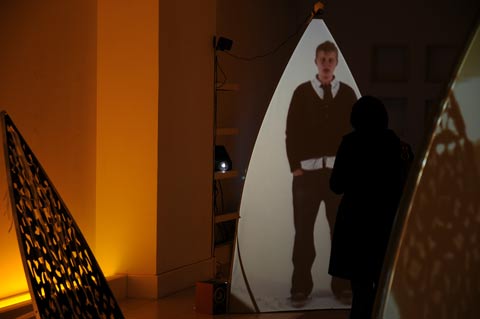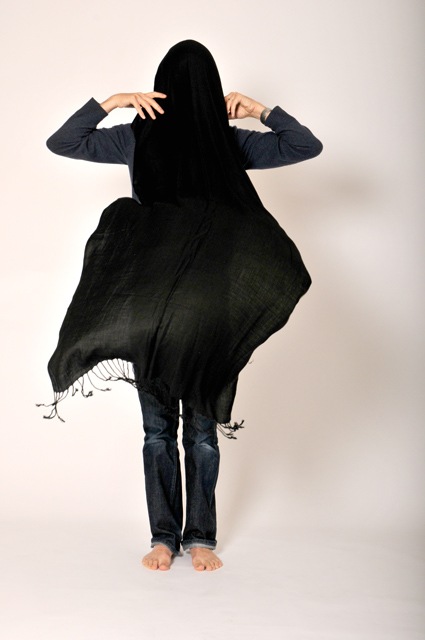Heard and Not Seen
We were commissioned by the Police (not the band) to make a piece of work, focusing on connections with people with Islamic faith as part of the early days of the now, largely discredited, Prevent strategy. They’d come up with an idea for a project – Positive Images of Muslim People and wanted to work with us to deliver it. After we pointed out the unfortunate acronym, we came up with another pitch. How can we connect people of Islamic faith with more people, how can we promote better understanding between communities and avoid stereotyped images?
We started researching and, working with Iranian- British artist Mitra Memarzia we came up with the idea for Heard and Not Seen. We created a series of installations that would serve as an exhibition to create a space for thought and conversation about Islam and it’s relationship with non-Islamic people and societies. The installations included:
- A video piece of people of all kinds of faiths and beliefs, discussing ‘what gave them strength’ – this was projected at full human size, using reactive media which only activated when the viewer stepped close to it – inferring that we only get to understand if we make an effort to have dialogue
- A kaleidoscope showing newspaper headlines that referenced Islam – all of the headlines we collected during our research had some kind of negative connotation
- We invited people off the street (we were based in the Mailbox Mall for the first outing) to come into a photographic studio and we’d make images of them ‘playing’ with a headscarf or hijab – the scarf being a strong identifier of muslim women and a symbol often villified by Islamophobic people of media. We made some great images including people holding the scarf like a baby, covering themselves completely and playing tug-of war – these were projected onto one of the arch-like projection screens we’d made, referencing Islammic architecture.
- A niqab-like structure which you would stand inside, looking out through mesh, whilst hearing stories from women on why they chose, or did not choose the wear a scarf.
- An interactive piece where people could leave questions on ribbons, which Muslim people could answer by tying another ribbon to – onew of our favourites was – ‘do Muslims have a sense of humour’ to which the answer was ‘don’t panic, I’m Islamic’.

We made a binaural soundtrack to the piece, so that the gallery space would not be silent, using sounds of church bells, the call to prayer,, sounds of washing and people talking, going about their daily business, side by side.
The exhibition was meant to be a starting point for conversation and we would have invigilators on hand to answer questions, as well as organised talks between groups of different faiths, or none and this provoked a lot of very interesting discussions. Our first iteration was at the Mailbox where the BBC were based and, as a bit of free diversity training in our opinion, we had groups of BBC workers and journalists visiting. There were some quite challenging conversations had, our invigilators asking why it was always the same representatives and ‘community leaders’ interviewed on TV and offering to speak themselves. There was a lot of controversy around the project as a whole, for instance we were told we couldn’t have alcohol at our launch by our steering group – we told them that this project was for everyone and that soft drinks would be available, it’s an art world trope that alcohol is available at launches, and as it turned out, it wasn’t an issue in the slightest. We also took the exhibition to Birmingham Museum and Art Gallery just as the ‘burkha ban’ was happening in France. This led to a story in the Daily Express stating ‘Barmy Artists Force People Into Burkhas’, referencing our niqab installation – a completely ridiculous take on the subject, but we were grateful for the thousands of pounds worth of free publicity it brought to the project. It also attracted lots of anti-Islamic people to the exhibition, who were just the sort we wanted to have that conversation.
